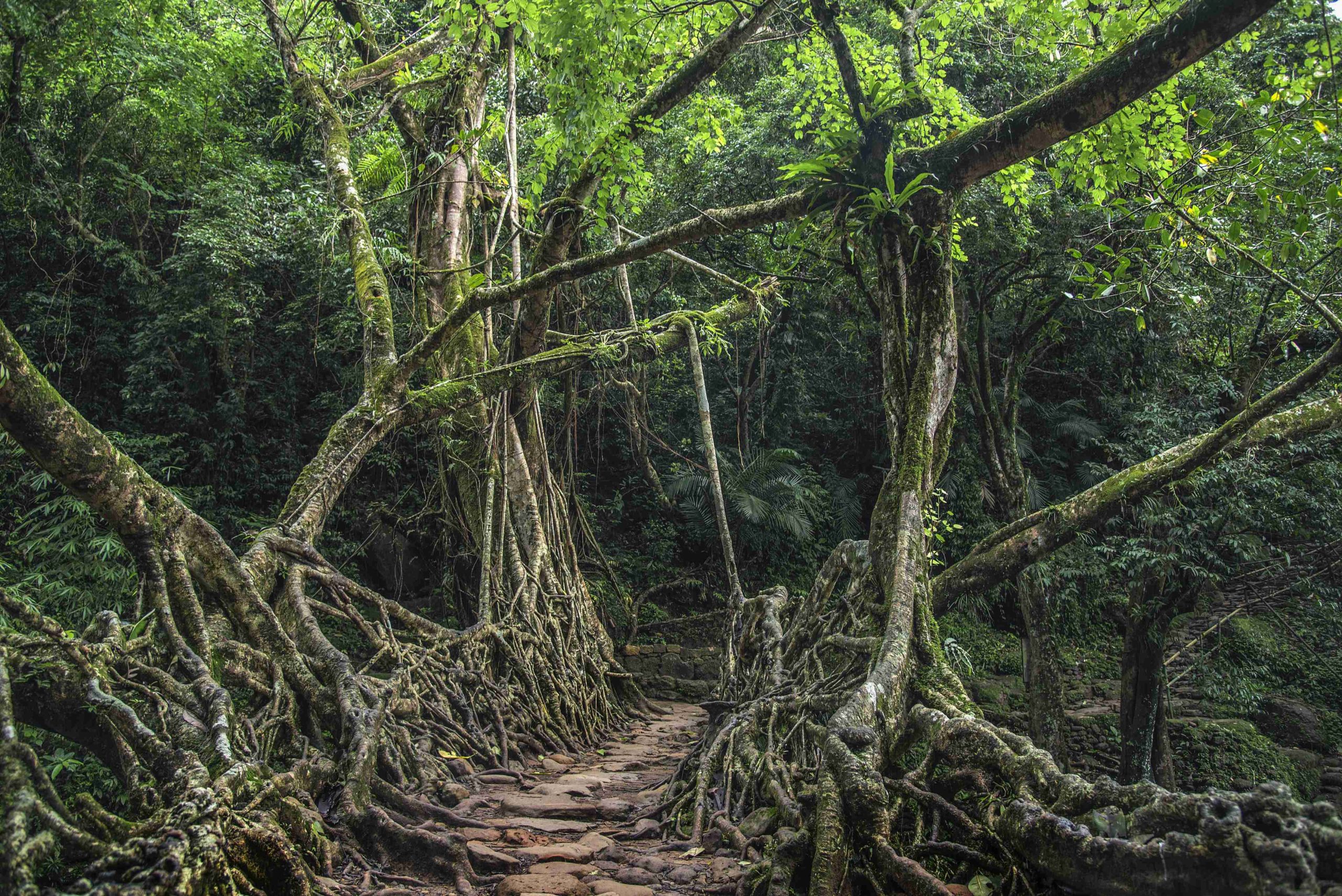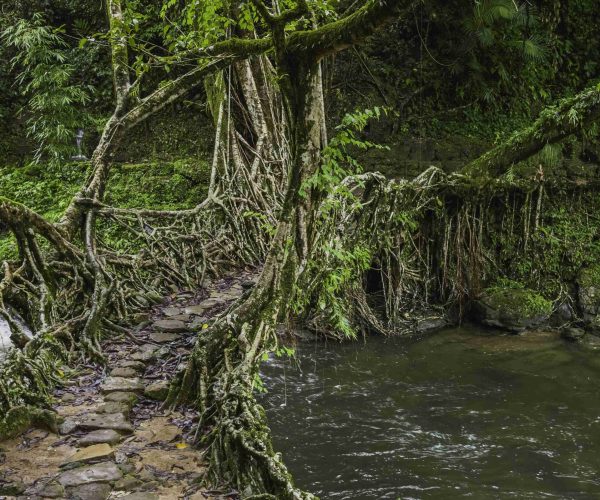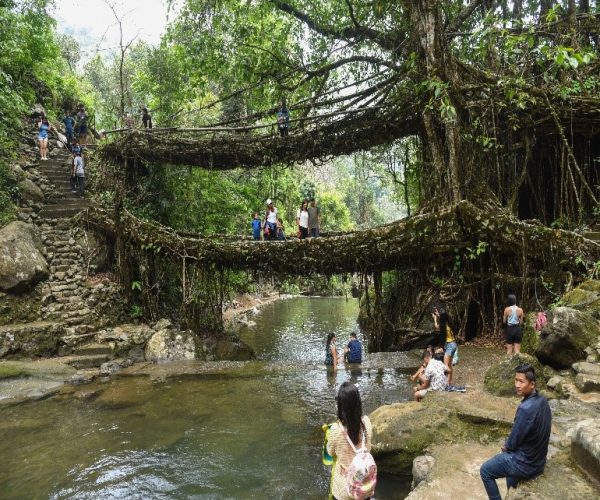The “Living Root Bridges of Meghalaya” are man-made marvels of the people Location, history, significance The living root bridges are one of Meghalaya’s most beautiful tangible heritage sites. These sites have recently been added to the UNESCO world heritage site list.
The living root bridges are one of Meghalaya’s most beautiful tangible heritage sites. These sites have recently been added to the tentative UNESCO world heritage site list. They are made of intertwined roots which are a sort of magic, but they aren’t imaginary. These bridges have been built for centuries by the indigenous people of the land (Khasis and the Jaintias). They have also been used by these people to cross the overflowing rivers during the monsoon season. Not only is it a naturally built ecosystem of local flora but it also symbolizes the relationship and knowledge that the local people have over their region and the cultural significance that it holds for them. Under ideal conditions, a root bridge is thought to be able to persist for hundreds of years. These bridges frequently rise 50 to 100 feet in the air. The state’s longest living root bridge is said to be a whopping 175 feet in length. There are approximately one hundred or so known living root bridges across different villages. Some of the most popular of these living root bridges are in Nongriat, Cherrapunji, Nongbareh and other nearby locations.
What is a living root bridge?

These are naturally built bridges mainly built by firstly planting two rubber trees of the Ficus elastica on either side of a river. These trees usually take about a decade to grow and generate secondary aerial roots. These roots can then be weaved to construct sturdy structures and then form enormous roots for reinforcement. Next, the local bridge builders of the region would then direct the roots of the bridge by weaving bamboo scaffolding. This scaffolding is used to gently push the aerial roots across the river until they are planted on the opposite side after being weaved onto it. Every two years, they change the bamboo scaffolding since the moisture and humidity might damage it. The roots ultimately become thicker and intertwine with those of a different tree on the other side. Over the period of 20 to 30 years, they continue to guide the roots on the existing bridges until the roots can stand on their own. At that point, you have live root bridges that must be continuously checked and cared for.
Popular living root bridges:
Once they have been carefully grown and cared for, the living root bridges can be found in these regions of Meghalaya:
The Nongbareh living Root Bridge, which is located in the center of the town, is recognized for its mesmerizing beauty. This bridge has a double-span structure which bisects the Amaya lee river and a road going to the river Umngot. This bridge is known for having a remarkable structure. It joins the banks of two rivers and provides an architectural elegance that is unique in its field. The bridge is an ancient one that is also said to be more than one hundred years old.
Another area below this settlement known as Shmia Syntem is another lovely sight that has attracted many tourists. It takes around an hour to descend to the riverbed and is located along the Umngot river pathways.


Why are these bridges important?

These bridges carry major significance to the farmers and villagers of the region. This is so because it enables them to get to their respective plantations, homes, or areas where they need to deliver products.
These bridge carry big cultural significance. This is so as the entire community must collaborate to design, manage, and maintain each bridge. They also take more than one generation to work on them. This is done so that these bridges can also be used by the future generations of the people who are presently gently tending to the younger bridges. Many residents in the surrounding areas of these bridges have also now become financially independent because of them.
These bridges are also crucial for biodiversity. This is because they support pollinating insects, promote the growth of moss, and provide a habitat for squirrels and bird nesting places. By turning trees into bridges, the Khasi people have been successful in creating many places where animals may cross rivers securely. Bark deer and clouded leopards are known to utilize root bridges to cross gaps in the forest. These bridges not only add to the beauty but also support the growth and well-being of the area in which they are located.
